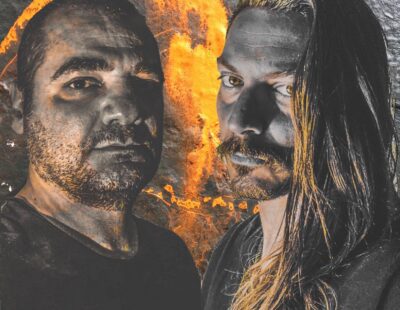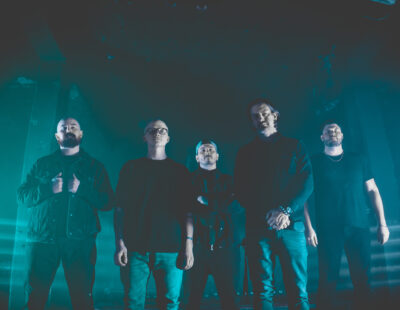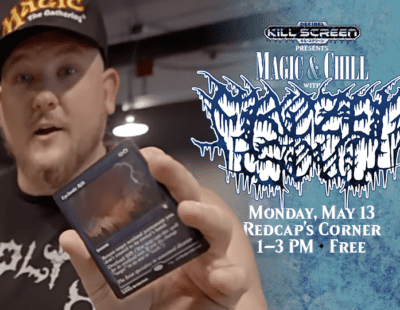
It was the mid-2000s. The storm clouds of Nu-Metal were finally beginning to break over the landscape of extreme music, and high-school aged kids like me were discovering all the sounds shut out by the torrent of JNCO Jeans and record scratching. As we were acclimated to the scream-and-breakdown riff salads of metalcore, a flurry of other sounds burst out from the hardcore universe.
In late summer 2004, my best friend returned from film camp to tell me about two new bands he’d been introduced to. Earlier that year, he’d made me familiar with the As I Lay Dying’s and Lamb of God’s of the world, but this prescription was going to be much more unorthodox. “Drew, you need to check out these two bands: Between the Buried and Me and The Locust. BTBAM immediately clicked with me as an interesting and engaging take on the metalcore sound. The Locust struck me as bold, experimental, innovative…and…TOTALLY…INSANE.
And this insanity has been rightly rewarded by Decibel through it’s induction of The Locust’s 2003 album Plague Soundscapes into the Decibel Hall of Fame (pick up issue #145 to read the story in full detail)! Just the song titles alone qualify for their own Hall of Fame: “Who Wants a Dose of the Clap?,” “The Half-Eaten Sausage Would Like to Meet You in His Office” and my all-time favorite on the album “Anything Jesus Can Do I Can Do Better.” (“New Set of Teeth” is still my favorite from the band, though…THAT RIFF!!)
The band took elements of death metal, grindcore, hardcore, electronic music, God-knows-what-else and crafted a completely original and gloriously obnoxious concoction. Naturally, this brought the band many detractors. In 2016, factionalism within extreme music seems kind of silly. In the post-industry collapse environment of today, bands seem less willing to go on genre-defending feuds (the war over black-gaze notwithstanding). 2003 was different. As audiences flocked to new forms of heavy music, there were a lot of old scores and allegiances to be settled. As bassist and vocalist Justin Pearson notes:
“The negativity toward us was because we were weird and apparently looked a certain way, even before we had the uniforms, and that was a big criticism people were focusing on above our music. It was also a drag because it was all about the way we dressed, and someone said we were making it impossible for fat kids to succeed in hardcore, which was bullshit because we weren’t simply prescribing to hardcore; we were into death metal, no-wave, weird hip-hop, all kinds of shit. There were a lot of random, misdirected criticisms toward us.”
The band goes on to note how they even had bottles thrown at them at shows in the U.K (and probably not with the benefit of the cage barrier like in Blues Brothers). As a person new to that whole world at the time, everything was awesome and a huge relief from the 1997-2002 era. Sure, The Locust made me laugh at first, but as with many types of extreme music, this exasperation eventually morphed into appreciation and respect. Pearson describes the album’s vision perfectly:
“We were young and didn’t know our place in the world or our place in music, and we were reacting to the aggressiveness of the world and intensity of society. It just felt like a plague soundscape—a post-apocalyptic “fuck you” without being nihilistic. There has to be a glimpse of hope, and on the album as there was a lot of absurdity and humor… you have to be able to laugh. We were trying to push everybody’s buttons, basically”
Go ahead and pick up the latest issue of Decibel…and File it Under ‘Soft Core Seizures.’





